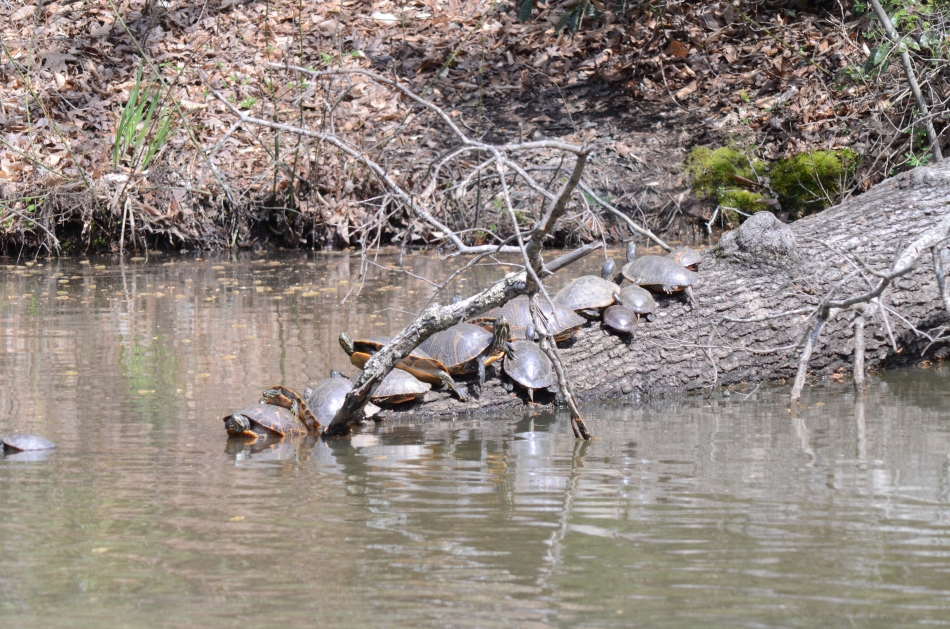Red Trail

Bob Gore
Turn right onto the Red Trail and follow it down to Martin's Branch and to the marsh where the reservoir begins.
Riparian Habitat
Riparian areas are the narrow margins along streams, rivers and lakes, where vegetation is strongly influenced by the presence of water.They are among the most productive of natural systems and therefore play a key ecological role in the health of the entire ecosystem.
Preserving vegetation along riparian zones is critical to the health of the watershed. An intact riparian zone acts as a filter between streams and the adjacent environment, reducing erosion and sedimentation in stream beds, and preventing the release of excess nutrients and pollutants into the aquatic environment, thus protecting aquatic life.
Riparian areas are particularly vital to wildlife, as they provide water, shelter, and food necessary for survival. They serve as important corridors between larger areas of habitat, facilitating dispersal and migration of wildlife.
Wildlife that depend on clean water include many macroinvertebrates that make up the larval community of aquatic insects, including dragonflies, caddisflies, mayflies and stoneflies. The presence of these larval forms is indeed the barometer of a stream's health.
Frogs, toads and salamanders need the riparian environment for their reproductive activities. Many of our common reptiles spend most of their time in the water, including the painted turtle, snapping turtle, and northern water snake. Beaver, muskrat, and otter all need an aquatic habitat to survive. Mink and raccoon will be frequent visitors to the streamside for a drink and their next meal.
Many birds also depend on this habitat for food and nesting opportunities. Heron, ducks, and other aquatic birds must live around water for the fish and amphibians that live there. Migratory songbirds often use the riparian corridors for migration and some, like the Louisiana waterthrush, for nest sites.